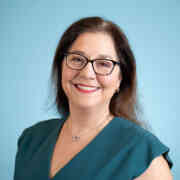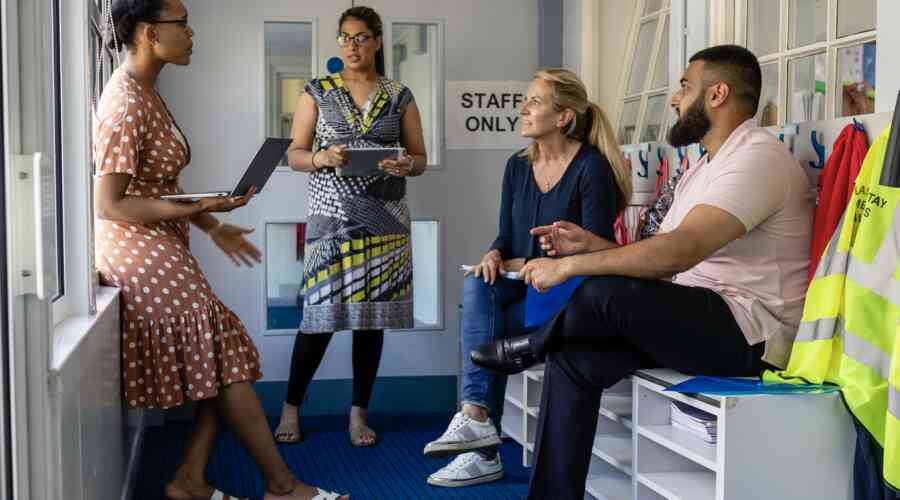Spring Forward: Four ways to maximize CS development in the new season




Spring is finally here! Along with shaking out the winter cobwebs, getting more time outdoors, or planting your garden, spring is a great time to start closing the book on another academic calendar year, and solidifying plans for the summer. From a community school development perspective, this is the time to take stock of what you and your team have accomplished this year, and review your implementation plan to see what’s on deck. So, what should you do? Here are our four top ways to make the most of the spring season.
With summer just around the corner, it’s time to start preparing for successful transitions. If you’re a site-based practitioner, work with your teams (e.g., COST, SSTs) to address any student referrals, hold restorative justice circles to address persistent situations or conflicts, and have thoughtful and intentional conversations about transitions from one grade (or school) to the next.
As students move to a new level (e.g., into middle school), consider ways to help get them ready for the fall. Share information with families and caregivers about any enrollment requirements, work with colleagues to set up tours, information centers of meet-and-greets, or parent meet-ups. Help make sure students understand what the next school year will look like – what’ll be different, what’ll stay the same, and who they should look out for and get to know – e.g., teachers, principal, community school coordinator, counselors, the expanded learning director.
In terms of summer programming, consider prioritizing students for summer school or enrichment enrollment, reaching out to partners to identify program slots for other students, and formalize a plan for staying connected to students and families/ caregivers between the end of this school year and the start of the next one.
Document and organize all the things that you did this year. Collect artifacts like meeting agendas and minutes, copies of newsletters, program impact data–all the things that bring to life the work you did over the course of the school year. Put it all together in one place – this could be a binder, a filing cabinet drawer, or a Google drive! Whatever works for you and your teams. Pro tip: take the time to put together a “cover sheet” outlining what’s in your binder or drive, summarizing the year’s successes and challenges, and reflecting on what you learned. Make it easy for the reader to follow your logic!
Along the “what you learned” lines, this is an important time of year for your advisory council or leadership team. Sure, everyone is TIRED, but help your leaders look at, understand, and digest any end-of-the-school-year data (including surveys, focus groups, etc.) while it’s “fresh.” Track and document progress towards school level goals, and develop initial priorities for next year. Talk through what you learned this year, identify high points and sticky wickets, and reflect on where you’ve been.
But don’t stop there. Let your school community know how the year went, how your community school (CS) development work impacted teachers, students and families, and offer opportunities for new people to engage in this work. Share out accomplishments, address challenges, and ask interest holders for their take on how the school year went–and how their input can shape next steps and priorities.
Now that you’ve taken a look at what went well and what might have gone better, it’s imperative to identify areas for growth and what you need to support your CS development work moving forward. What might you do with your teams over the summer to build new and strengthen existing CS muscles? How are you doing on those enabling conditions?
Summer is a good time for deeper dives – do you need to do a CS 101 refresher with teachers? How about community partners? Do you want to do some work around shared leadership and decision-making structures and protocols? Work with the teams at your school now to make summer learning plans. You might also consider what kinds of trainings you want to have community partners participate in, too. But, be respectful of who is “on campus” and who is not being compensated for their time. If there are opportunities to stipend folks for their participation, do so – and not just for classified or certificated staff, but for all of the folks you are asking to contribute.
Think about how you need to grow your team in other ways, too. Meet with existing staff and partners individually to talk through plans for next year–goals, expectations, and deliverables–as well as anything that staff, teams and partners need to be successful next year. For staff and partners working over the summer, now is a good time to get project and work plans squared away, and to make sure that important dates (like vacations!) are on the calendar.
If you need to bring on additional team members next year, this is also a good time to post jobs and bring together a group of interest holders to help interview candidates. You might also identify and make a plan to connect with new partners and champions over the summer.
And finally, do some good, old-fashioned spring clearing. Get through that pile of paperwork, put your Trapper Keepers in chronological order, put the coffee mugs back in the staff lounge, change out your bulletin board…you get the idea. Get your physical and mental space ready for summer (or fall!).
And, hey! It’s beautiful outside! The sun is shining! Don’t forget to take time to CELEBRATE! You and your teams worked hard and learned so much this year – take a minute to celebrate your progress, your accomplishments and the relationships you’ve built. You could even consider throwing a community-wide summer celebration. Recalibrate – refresh any tools or materials you want to use next year, revisit your implementation plan and see what needs to be added or revised, remind your teams of the “whys” of this work. Thank each other (it’s important).
And finally, relax! Rest, reflect, regroup, RELAX. You’ve earned the break!
Want more tips to support your community school development? Sign up to get content like this delivered to your email inbox.

Melissa Mitchell is Director of Resource Development at the Community Schools Learning Exchange (CSLX). She brings over 15 years of experience supporting community school development, from providing coaching and direct technical assistance to schools, districts, practitioners and community partners, to working with legislators and policymakers to develop supportive-state level policies that advanced community school development across Illinois. Get in touch with Melissa via email at melissa@cslx.org.